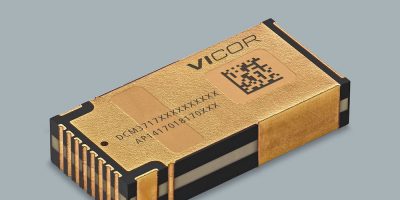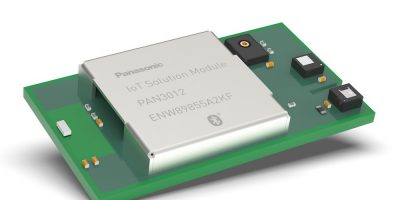Bluetooth 5.0 long range capabilities and Bluetooth advertising channels have been added to NXP Semiconductors’ KW3x family of microcontrollers. The KW39, KW38 and KW37 microcontrollers extend the wireless microcontroller family.
They offer seamless migration with hardware, software and tools compatibility with the previous generation of devices, KW34, KW35 and KW36. The connectivity microcontrollers allow Bluetooth LE devices to communicate at distances of more than a mile and increase the amount of Bluetooth advertising channels and advertising data within the Bluetooth standard, says NXP.
The KW39, KW38 and KW37 wireless microcontrollers are designed with automotive and industry-grade hardware and software, along with robust serial communications with CAN-FD peripherals. They are suitable for automotive applications, such as keyless entry, sensors and wireless onboard diagnostic functions. They also enable industrial applications such as building control and monitoring, fire and safety, home and institutional healthcare, asset management and monitoring.
NXP claims that the KW39, KW38 and KW37 deliver best-in-class RF performance, with extreme RX sensitivity to allow for the long range Bluetooth LE connections. They achieve -105 dBM RX sensitivity with LE-coded 125kbits per second data rate, for example, allowing for connections in harsh environments and at extended distances. The radio supports up to eight simultaneous secure connections in any master/slave combination, allowing multiple authorised users to communicate with the device. The microcontroller’s data stream buffer allows the capture of radio parameters without stalling processor or DMA operations, enabling high-accuracy measurements needed for distance and angle approximations.
NXP’s MCUXpresso tool suite features a certified Bluetooth LE software stack with application programming interface calls. The KW39, KW38 and KW37 microcontrollers extend the previous generation of devices with hardware and software compatibilities for faster design cycles. In addition, the KW38 microcontroller integrated FlexCAN, enables seamless integration into an industrial CAN communication network or an automobile’s in-vehicles network. The FlexCAN module can support CAN’s flexible data rate (CAN FD) for increased bandwidth and lower latency. In addition, the KW38 integrated FlexCAN, enables seamless integration into an industrial CAN or an automobile’s in-vehicles network. The FlexCAN module can support CAN’s flexible data rate for increased bandwidth and lower latency.
The KW39, KW38 and KW37 wireless microcontrollers feature AEC-Q100 Grade 2 and industrial qualifications for exceptional durability and performance for safety-critical applications
RF transmit power and receive sensitivity enhancements, including -105dBm typical Bluetooth LE sensitivity in 125kbits per second, -98dBm typical Bluetooth LE sensitivity in 1Mbits per second, -101dBm typical generic FSK (at 250kbits per second) sensitivity and +5dBm maximum transmit output power provide an advanced link budget that helps ensure long range of communication and a high immunity to interference
The AES-128 accelerator is a true random number generator for fast encryption/decryption, using hardware security algorithms for network commissioning and transmission of supported protocols.
The microcontrollers are supplied in a 7.0 x 7.0mm wettable flanks 48HVQFN package with up to 512kbyte flash memory with ECC and 64kbyte SRAM, allowing space for protocol stacks, application profiles and custom user firmware.
http://www.nxp.com







